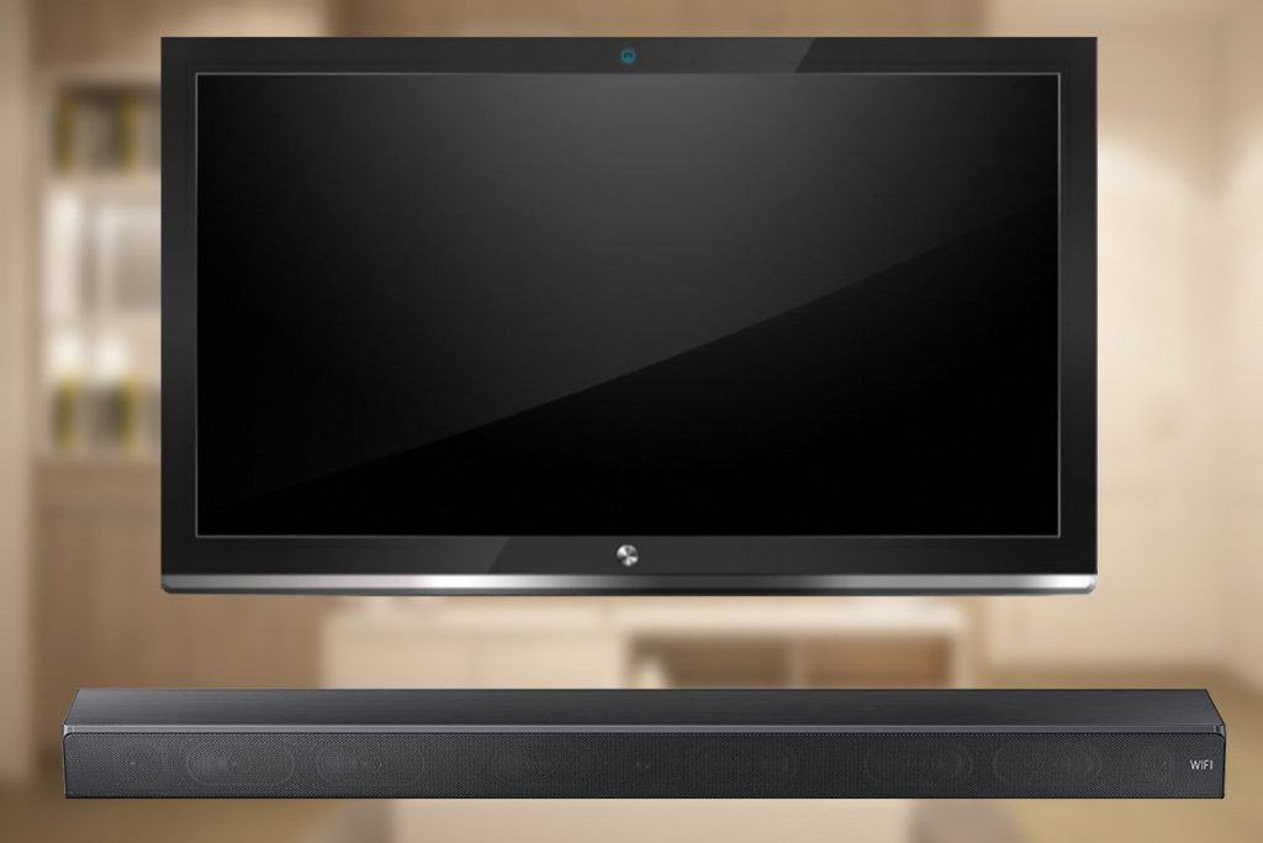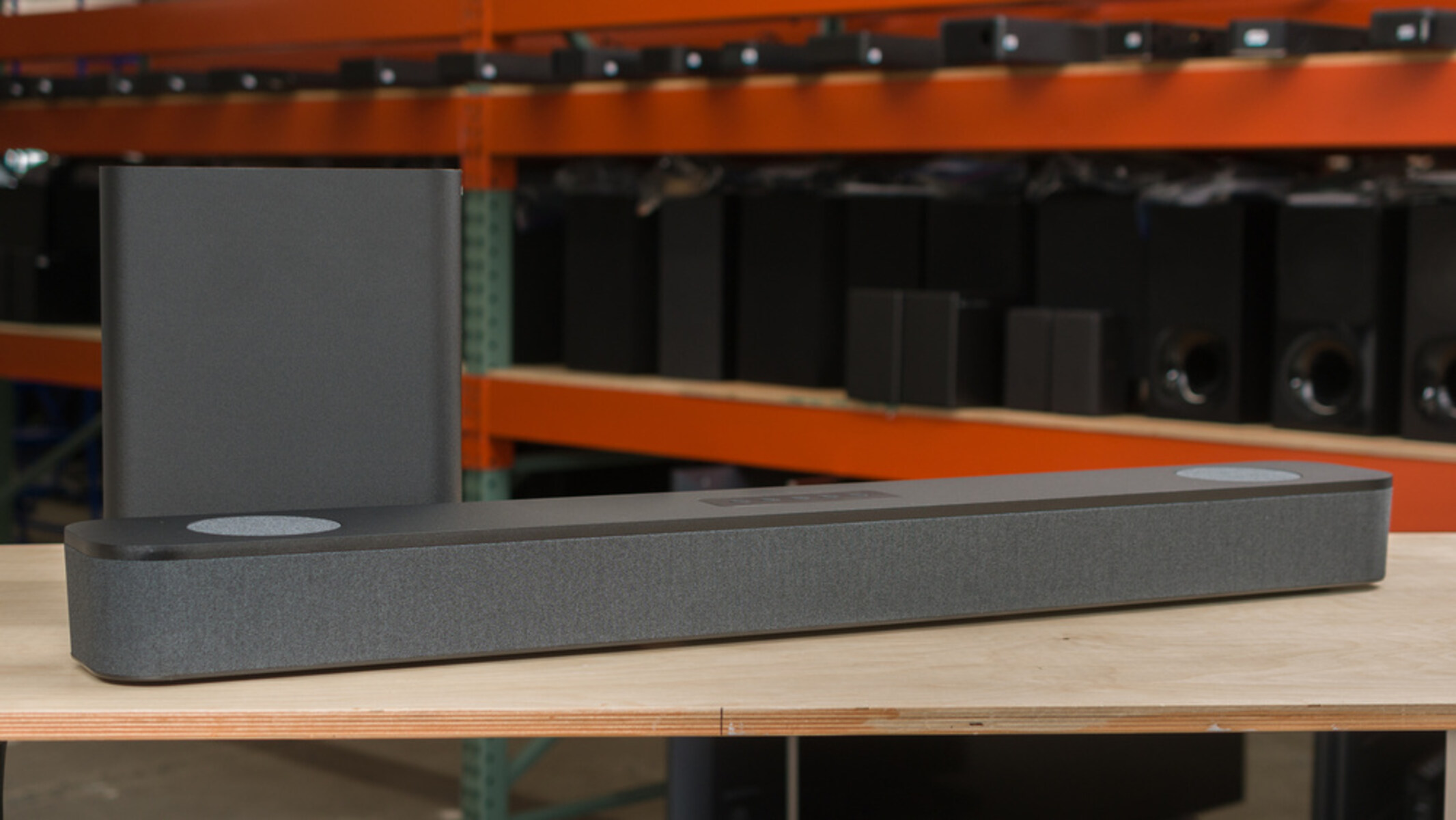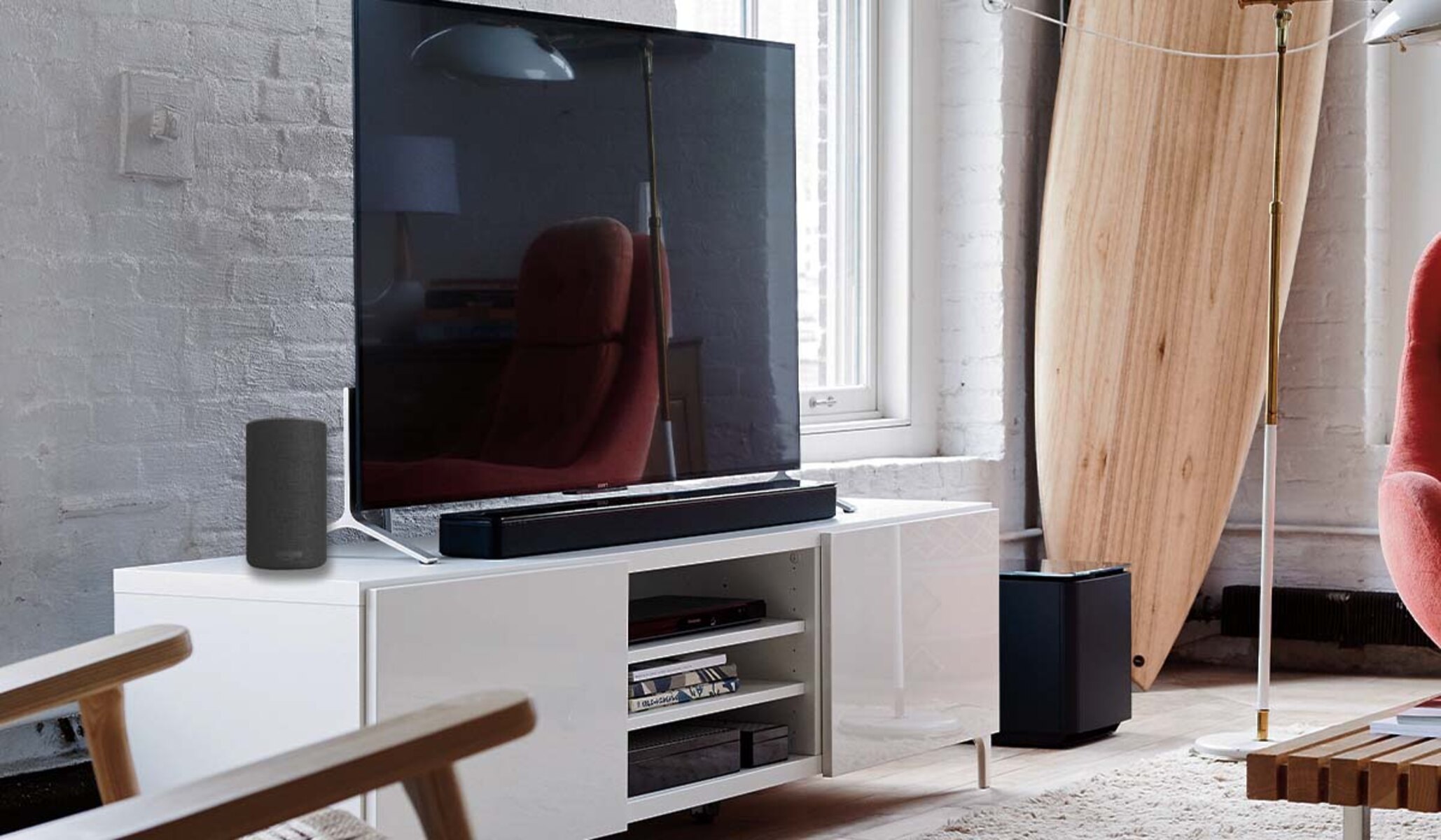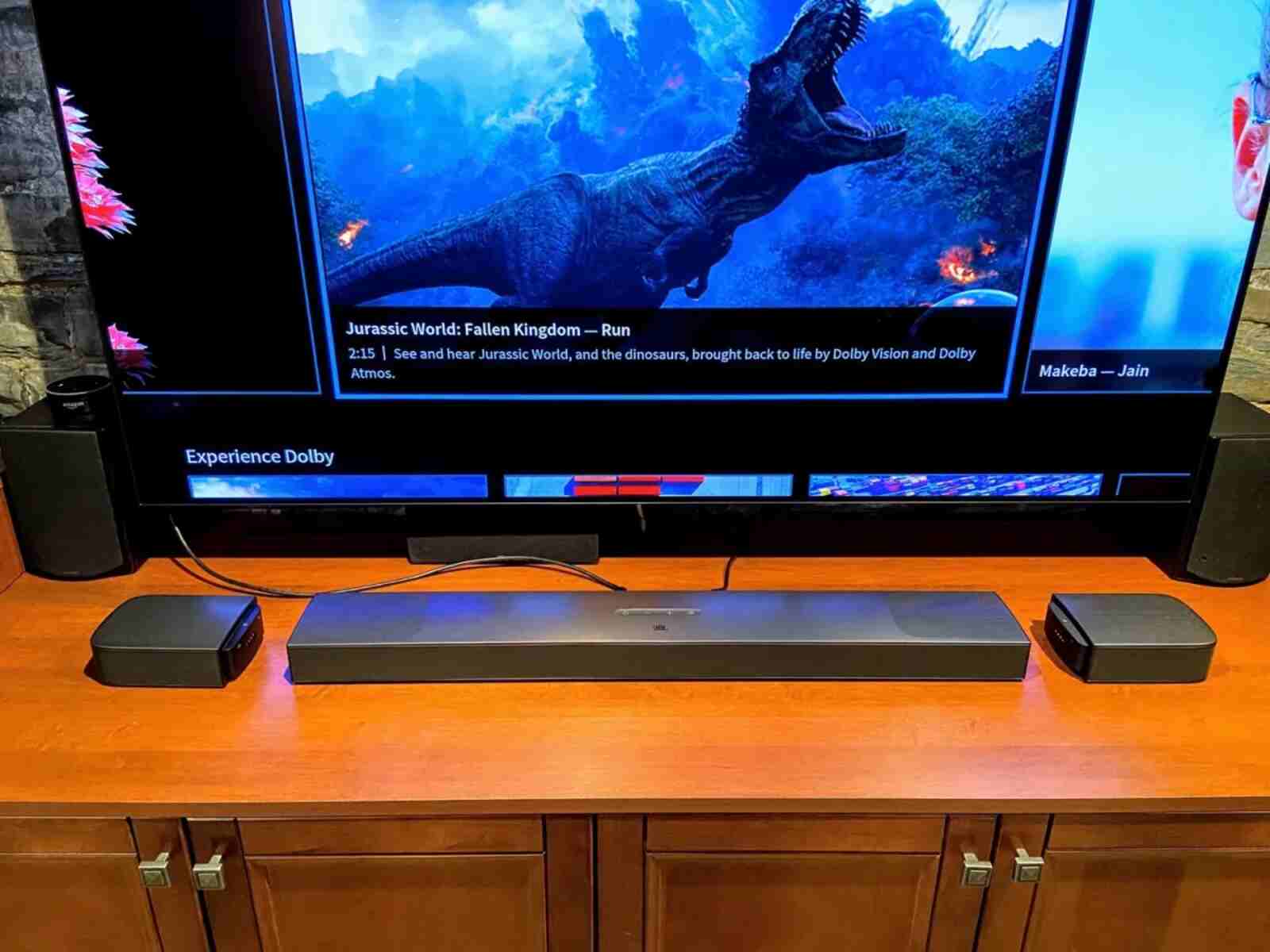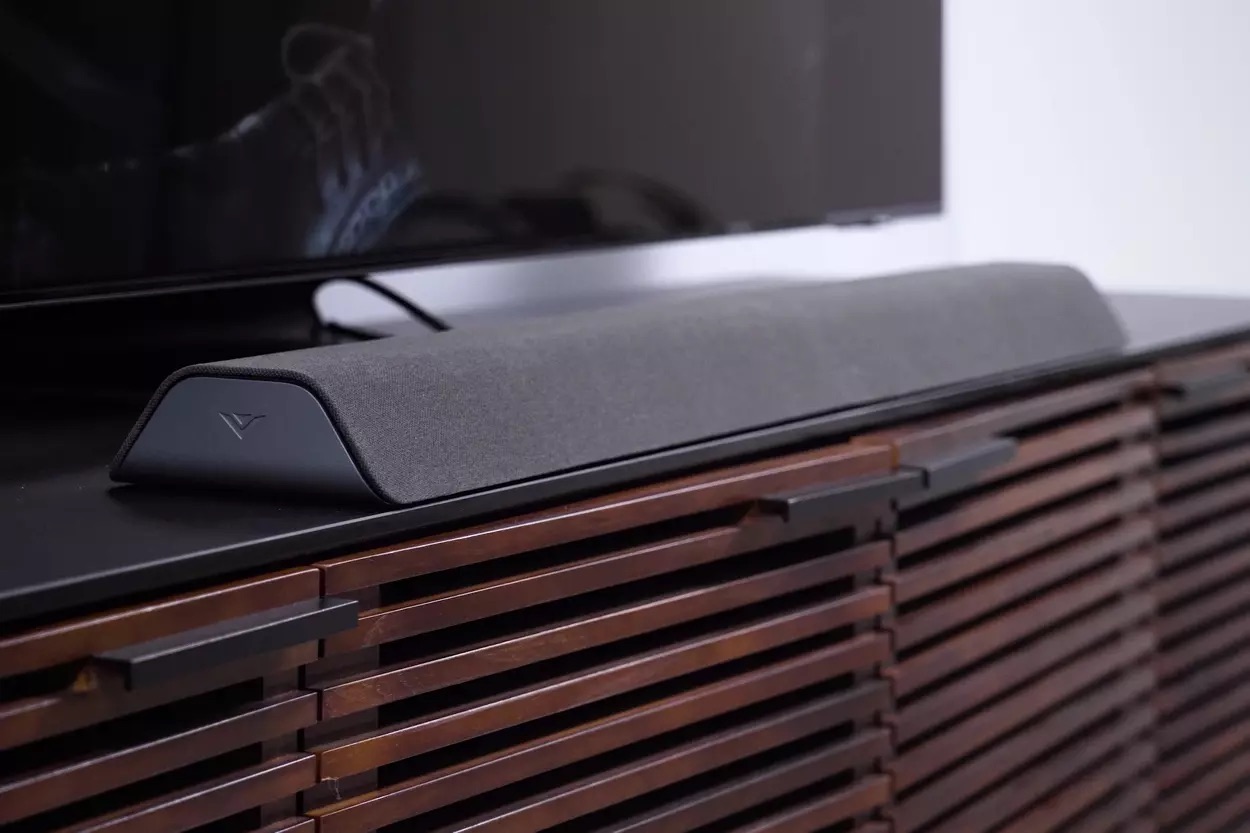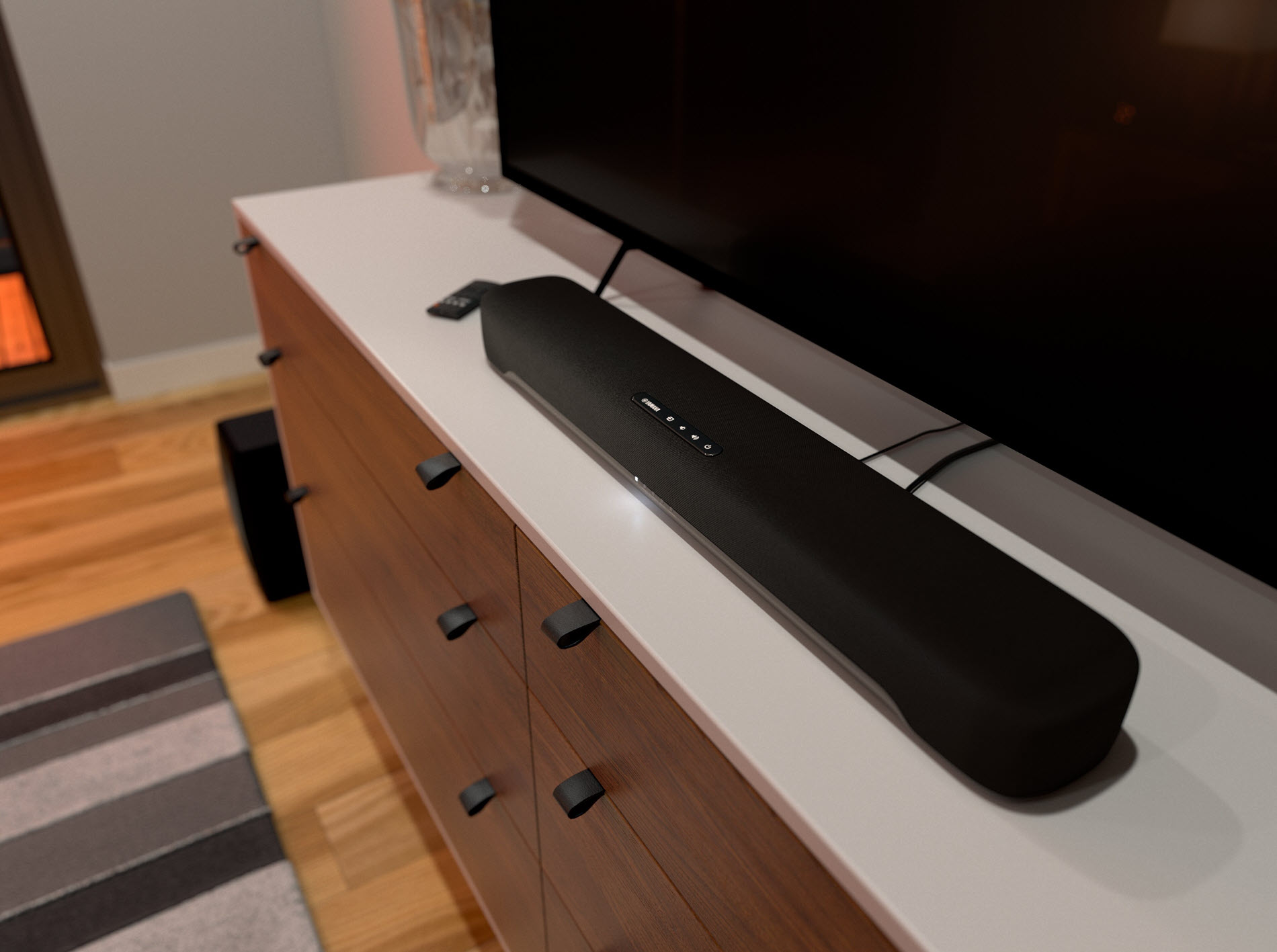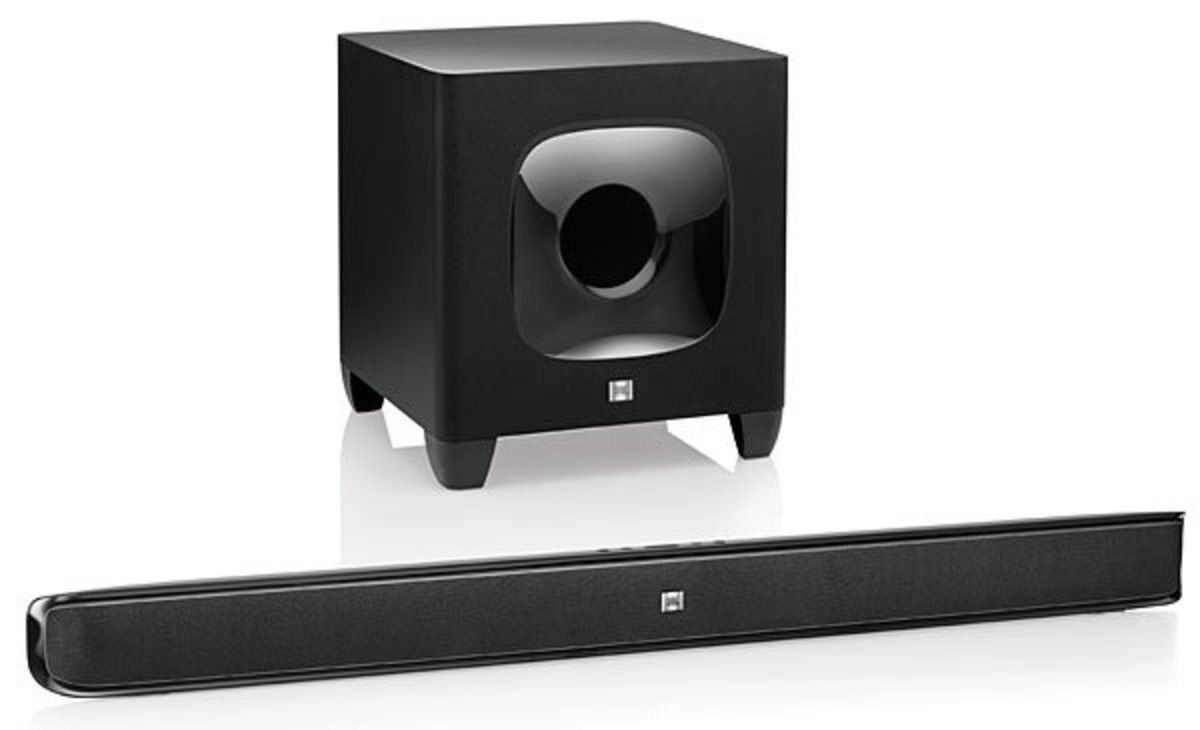Introduction
When it comes to enhancing your TV viewing experience, a soundbar can be a game-changer. Soundbars are designed to deliver high-quality audio, enhancing dialogue clarity, and adding depth to action-packed scenes. But how do you ensure that your soundbar is positioned optimally? Specifically, how far below the TV should the soundbar be placed?
Finding the perfect placement for your soundbar is crucial to maximize its performance and achieve an immersive audio experience. While there isn’t a one-size-fits-all answer, there are several factors to consider when determining the ideal positioning for your soundbar.
In this article, we will discuss the various factors to consider when placing a soundbar below the TV, provide guidelines for distance, explore placement options for different types of soundbars, and offer tips for achieving the best audio performance. By the end, you’ll have a clear understanding of how to position your soundbar for optimal sound quality.
Factors to Consider When Placing a Soundbar Below the TV
When determining the placement of your soundbar below the TV, there are several important factors to take into consideration. These factors can greatly impact the sound quality and overall viewing experience. Here are the key factors to consider:
- Space and Room Layout: Assess the available space and the layout of your room. Consider the size of your TV, the dimensions of the soundbar, and the placement of other furniture. Ensure that the soundbar fits seamlessly with the overall aesthetics of your entertainment setup.
- TV Height: Take note of the height at which your TV is mounted or placed. Ideally, the soundbar should be positioned below the TV without obstructing the view. If the soundbar is too high or too low, it can impact the audio dispersion and the synchronization between the sound and visuals.
- Speaker Configuration: Consider the speaker configuration of your soundbar. Some soundbars come with integrated subwoofers, while others require a separate subwoofer unit. If your soundbar has a separate subwoofer, ensure that there is enough space for it to be placed properly.
- Wall Mounting: Determine whether you plan to wall mount your TV or use a TV stand. If you choose to mount your TV on the wall, make sure that the soundbar is mounted below it or positioned on a shelf directly below. This allows for better sound projection and avoids any obstruction from the TV.
- Wire Management: Consider the placement of cables and wires. Ensure that there is enough space and accessibility for connecting the soundbar to the TV and other devices. Neatly organize the cables to avoid any tangles or potential interference with the sound quality.
By considering these factors, you can make an informed decision about where to place your soundbar below the TV. Taking the time to properly assess your space and ensure compatibility between your soundbar and TV setup will greatly enhance the audio experience and overall enjoyment of your favorite movies, shows, and music.
Optimal Placement for Soundbars Below the TV
To achieve the best audio performance, it is important to position your soundbar correctly below the TV. While the optimal placement can vary depending on factors such as the room layout and your personal preferences, there are some general guidelines to keep in mind.
One common recommendation is to place the soundbar at ear level when you are seated in your primary viewing position. This allows for the sound to be projected directly towards you, creating a more immersive experience. The soundbar should be aligned horizontally with the TV screen, ensuring that the audio and visuals are in sync.
If your TV is sitting on a stand, you can place the soundbar directly in front of it. Make sure that the soundbar is centered and not obstructing any part of the TV screen. Ideally, there should be no objects blocking the soundbar, as this can hinder the dispersion of sound waves and impact the audio quality.
For wall-mounted TVs, the soundbar can be mounted directly below the TV. It is recommended to use a mounting bracket or shelf specifically designed for soundbars to ensure secure and proper placement. This setup allows for the sound to be projected at an optimal angle towards the viewer, maximizing the audio performance.
If your soundbar comes with a separate subwoofer, consider placing it on the same side as the soundbar. This helps to maintain a balanced audio output and prevents any potential syncing issues between the subwoofer and the soundbar. However, if the subwoofer is wireless, you have more flexibility in its placement, allowing for better bass response throughout the room.
Keep in mind that every space is unique, and the optimal placement for your soundbar may require some adjustments and experimentation. It is recommended to sit in your primary viewing position and listen to the soundbar at different heights and distances to find the sweet spot that offers the best audio quality and immersion.
By following these guidelines and considering the layout and configuration of your TV and soundbar setup, you can achieve optimal sound performance and enjoy a truly cinematic experience from the comfort of your own home.
Distance Guidelines for Placing the Soundbar Below the TV
The distance between the soundbar and the TV is another crucial factor to consider when determining its placement. Finding the right distance can ensure that the audio and visuals are synchronized, creating an immersive and balanced viewing experience. While there is no hard and fast rule, here are some general distance guidelines to keep in mind:
1. Close Proximity: Placing the soundbar within a close distance to the TV, such as 1-2 feet, can help create a cohesive and unified soundstage. This setup is ideal for soundbars with integrated or compact subwoofers, as it improves audio blending and enhances dialogue clarity.
2. Moderate Distance: For soundbars with separate subwoofers, positioning the soundbar 3-5 feet away from the TV can provide better bass response and a more immersive audio experience. This distance allows for improved dispersion of sound and creates a larger soundstage.
3. Spacious Placement: If you have a larger room or want to create a more expansive soundstage, you can place the soundbar 6-10 feet away from the TV. This setup is well-suited for soundbars with powerful subwoofers and can deliver a more enveloping surround sound effect.
Remember that these distance guidelines are not fixed rules, but rather general recommendations. The ideal distance may vary based on the size and power of your soundbar, the size of your room, and personal preferences. Experimenting with different distances and listening positions can help you find the sweet spot that offers the best audio performance.
Additionally, when positioning the soundbar, ensure that there are no obstructions between the soundbar and the seating area. Avoid placing the soundbar behind objects or in corners, as this can disrupt the sound dispersion and muffle the audio quality.
By considering the distance between the soundbar and the TV and adjusting it to suit your room and preferences, you can create an optimal audio experience that enhances your overall enjoyment of movies, TV shows, and music.
Placement Options for Different Types of Soundbars
Soundbars come in various shapes and sizes, and the placement options can vary depending on the specific type of soundbar you have. Here are some placement options for different types of soundbars:
1. Standalone Soundbars: Standalone soundbars are designed to be placed on a shelf, TV stand, or mounted directly below the TV. These soundbars are typically slim and can fit seamlessly with your TV setup. Ensure that the soundbar is centered and aligned horizontally with the TV screen for optimal audio projection.
2. Soundbars with Integrated Subwoofers: Some soundbars come with built-in subwoofers, eliminating the need for a separate subwoofer unit. These soundbars can be placed directly below the TV, just like standalone soundbars. Ensure that there is ample ventilation around the soundbar to prevent overheating.
3. Soundbars with External Subwoofers: Soundbars that come with separate subwoofers offer more flexibility in placement. The soundbar can be positioned below the TV, while the subwoofer can be placed next to it or in a different location within the room. Experiment with different positions to find the setup that delivers the best bass response and audio balance.
4. Wall-Mountable Soundbars: If you prefer a clean and minimalistic look, wall-mounting your soundbar can be a great option. Ensure that the soundbar is mounted correctly and securely below the TV, using a mounting bracket or shelf designed for soundbars. This setup can provide optimal audio projection and help save space.
5. Soundbases: Soundbases are soundbars designed to sit directly underneath the TV, offering a platform for the TV to rest on. These soundbases are wider and can support the weight of the TV. Ensure that the soundbase is large enough to accommodate the TV and fits within your TV stand or cabinet.
Consider the specific design and features of your soundbar when deciding on the placement options. It’s important to follow the manufacturer’s recommendations and guidelines for your particular soundbar model to ensure optimal performance and longevity.
Ultimately, the goal is to position the soundbar in a way that complements your TV setup and provides the best audio experience. Remember to consider factors such as room layout, aesthetics, and the specific requirements of your soundbar when choosing the placement option that works best for you.
Tips for Achieving the Best Audio Performance
To ensure that you get the best audio performance from your soundbar, here are some tips to keep in mind:
1. Positioning and Alignment: Proper positioning and alignment are key to optimal audio performance. Align the soundbar horizontally with the TV screen and position it at ear level when seated in the primary viewing position. This helps create a cohesive soundstage and delivers sound directly towards you.
2. Room Acoustics: Take into account the acoustics of your room when setting up your soundbar. Soft furnishings such as curtains, rugs, and furniture can help absorb excess sound reflections and improve overall audio quality. Experiment with room decor and placement to find the best sound balance.
3. Subwoofer Placement: If your soundbar has a separate subwoofer, experiment with its placement to optimize bass response. Placing it along the same plane as the soundbar, preferably on the same side, can help achieve better audio integration and prevent synchronization issues.
4. Adjust Soundbar Settings: Most soundbars come with various audio settings and equalizer presets. Explore the settings menu to customize the sound to your liking. Adjusting the bass, treble, and surround sound settings can greatly enhance your audio experience and make it more tailored to your preferences.
5. Connectivity Options: Take advantage of the connectivity options available on your soundbar. Connecting your TV, gaming console, or media player directly to the soundbar using HDMI or optical cables can ensure a direct audio signal, resulting in better sound quality and reduced latency.
6. Regular Maintenance: Keep your soundbar and subwoofer clean and free from dust accumulation. Regularly wipe the surfaces and check for any speaker cloth obstructions. Dust can impact the sound quality, so a clean and well-maintained soundbar will ensure optimal performance.
7. Firmware Updates: Check for firmware updates for your soundbar regularly. Manufacturers often release updates to improve audio performance, add features, and address any potential issues. Keeping your soundbar up to date will ensure that you are getting the best possible sound quality.
8. Test and Fine-Tune: Take the time to test different audio tracks and movies to fine-tune the soundbar settings and placement. Adjusting the settings based on the content being played can help optimize the audio performance for various genres and formats.
By implementing these tips, you can significantly improve the audio performance of your soundbar and enjoy a more immersive and captivating viewing experience. Experimentation and personalization are key to finding the perfect audio setup that suits your preferences and enhances your entertainment enjoyment.
Conclusion
Positioning your soundbar correctly below the TV is crucial to achieving the best audio performance and enhancing your overall viewing experience. By considering factors such as room layout, TV height, speaker configuration, and wire management, you can ensure that your soundbar seamlessly integrates with your entertainment setup. Taking the time to find the optimal placement and distance from the TV will greatly enhance the audio projection and synchronization with the visuals.
Remember that the optimal placement may vary depending on the type of soundbar you have, whether it has integrated or separate subwoofers, and whether you choose to wall mount your TV. Considering the specific design and features of your soundbar will help you determine the best placement option.
In addition to placement, consider implementing tips such as aligning the soundbar with the TV screen, optimizing room acoustics, adjusting soundbar settings, and regularly maintaining your soundbar for optimal audio performance. Testing and fine-tuning your settings based on different audio tracks and genres can further enhance your audio experience.
By following these guidelines and incorporating these tips, you can maximize the potential of your soundbar and immerse yourself in a truly cinematic audio experience. So, take the time to assess your space, experiment with placement options, and fine-tune the settings to enjoy the best possible audio quality and elevate your entertainment enjoyment to new heights.







